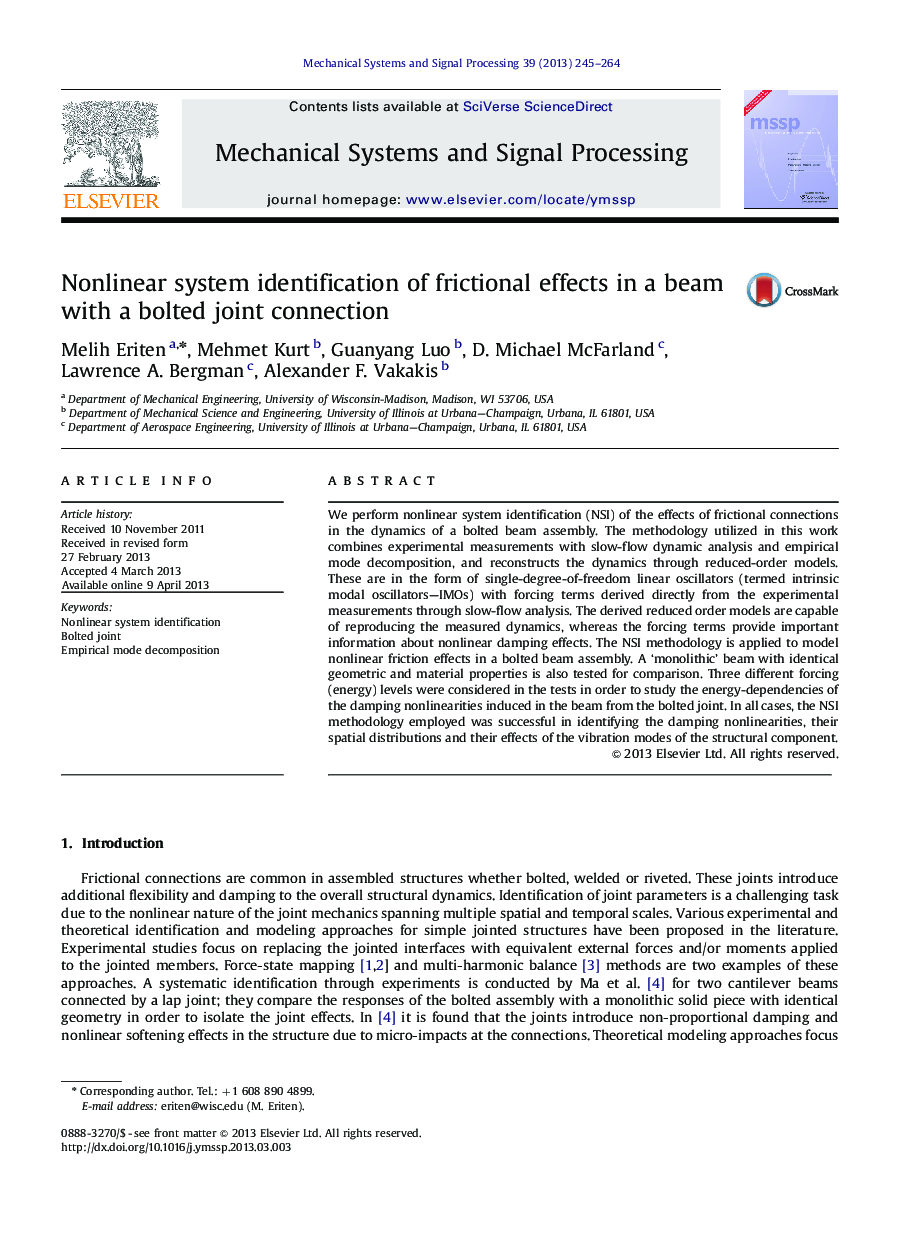| Article ID | Journal | Published Year | Pages | File Type |
|---|---|---|---|---|
| 561233 | Mechanical Systems and Signal Processing | 2013 | 20 Pages |
•Nonlinear system identification of a bolted beam assembly is performed.•Reduced order models with forcing are developed to reproduce experimental data.•The forcing terms are derived directly from the measured dynamics.•The forcing terms provide important information about nonlinear friction effects.•The damping nonlinearities, and their modal and spatial distributions are identified.
We perform nonlinear system identification (NSI) of the effects of frictional connections in the dynamics of a bolted beam assembly. The methodology utilized in this work combines experimental measurements with slow-flow dynamic analysis and empirical mode decomposition, and reconstructs the dynamics through reduced-order models. These are in the form of single-degree-of-freedom linear oscillators (termed intrinsic modal oscillators—IMOs) with forcing terms derived directly from the experimental measurements through slow-flow analysis. The derived reduced order models are capable of reproducing the measured dynamics, whereas the forcing terms provide important information about nonlinear damping effects. The NSI methodology is applied to model nonlinear friction effects in a bolted beam assembly. A ‘monolithic’ beam with identical geometric and material properties is also tested for comparison. Three different forcing (energy) levels were considered in the tests in order to study the energy-dependencies of the damping nonlinearities induced in the beam from the bolted joint. In all cases, the NSI methodology employed was successful in identifying the damping nonlinearities, their spatial distributions and their effects of the vibration modes of the structural component.
